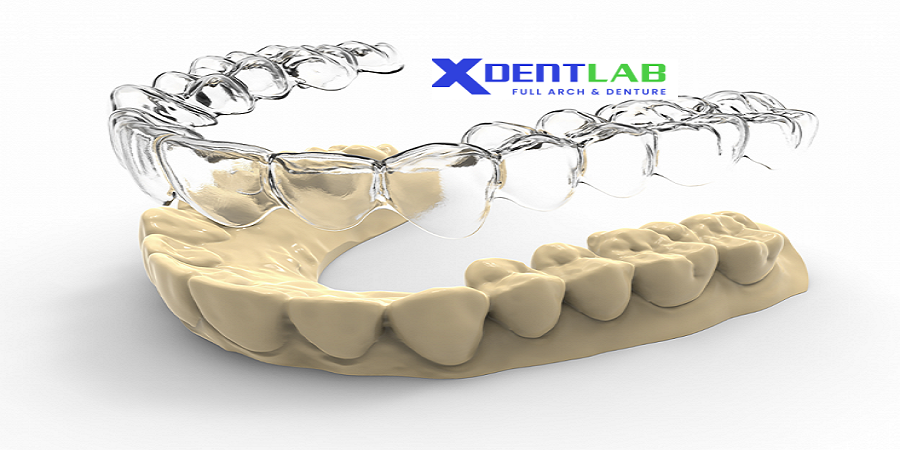
introduce 3D printed aligners xdentlab.com . 3D printed aligners have emerged as a significant innovation in the field of orthodontics, providing a modern approach to teeth straightening and dental correction. These aligners are custom-made digital devices designed to gradually move teeth into their desired positions, offering a more comfortable and aesthetic alternative to traditional braces. Aligner therapy has gained traction due to its appeal among patients seeking discreet dental solutions.
Contact fanpage: https://www.facebook.com/xdentfullarchdentureoutsourcing/
Introduction to 3D Printed Aligners
introduce 3D printed aligners . The foundation of aligner therapy lies in the advancement of digital imaging and 3D printing technologies. These innovations allow orthodontists to create precise models of a patient’s teeth and design a series of custom aligners tailored to their unique dental needs. The use of three-dimensional printing enhances the accuracy and efficiency of the manufacturing process, resulting in aligners that fit more snugly and are more effective in guiding the teeth over time.
One of the primary reasons behind the rising popularity of 3D printed aligners is their convenience and ease of use. Patients can remove the aligners while eating or brushing, which promotes better oral hygiene compared to traditional braces. This accessibility aids in maintaining oral health during treatment, fostering a more positive orthodontic experience. Furthermore, the aesthetic aspect of 3D printed aligners, which are transparent and less noticeable, appeals greatly to adults and teens alike.
As orthodontics continues to evolve, the integration of 3D printing technology is expected to play an increasingly vital role. Clinicians are reporting high levels of patient satisfaction with aligner therapy due to its effectiveness, comfort, and discretion. With ongoing advancements in both technology and materials, 3D printed aligners are set to revolutionize the orthodontic landscape, positioning themselves as a credible alternative to conventional methods.
Must-read articles: Clear aligner contract manufacturing
The Technology Behind 3D Printed Aligners
The advent of 3D printed aligners has significantly transformed orthodontic practices, largely due to the integration of advanced technologies that streamline the production process. Central to this innovation is the application of various 3D printing techniques, namely stereolithography (SLA) and fused deposition modeling (FDM). Each of these methods offers unique advantages in producing aligners tailored to individual patient needs.
Stereolithography (SLA) employs a laser to cure liquid resin into solid forms layer by layer. This high-resolution technique is particularly beneficial for creating detailed and precise aligners that fit snugly over the teeth. By utilizing SLA, orthodontists are able to produce exceptionally smooth aligner surfaces, which enhance comfort and wearability for patients. The precision afforded by this technology ensures that the aligners can effectively apply the necessary force to shift teeth into their desired positions.
On the other hand, fused deposition modeling (FDM) utilizes thermoplastic filament, which is heated and extruded through a nozzle to build objects layer by layer. While FDM is often more cost-effective, it typically results in lower resolutions compared to SLA. However, advancements in materials for FDM have improved the quality of aligners produced through this method, making it a viable option for many practices.
Additionally, the role of digital scanning and computer-aided design (CAD) software is pivotal in the production of custom-fit aligners. Digital scanning captures the precise geometry of a patient’s dentition, allowing for the creation of highly accurate 3D models. These models are then manipulated using CAD software to design aligners that precisely match the contours of the patient’s mouth. This technology not only enhances the fitting process but also accelerates the overall treatment timeline, increasing patient satisfaction.
Advantages of Using 3D Printed Aligners
The advent of 3D printed aligners has significantly transformed the field of orthodontics, offering numerous advantages over traditional braces. One of the primary benefits is the enhanced comfort experienced by patients. Unlike metal braces, which can cause irritation to the gums and mouth, 3D printed aligners are crafted from smooth, thermoplastic materials that minimize discomfort and reduce the likelihood of sores. This comfort can lead to better patient compliance, as individuals are less likely to remove aligners or avoid treatment due to pain.
Another notable advantage is the speed of production. The technology behind 3D printing allows for the rapid fabrication of aligners, often reducing the time from impression to final product significantly. This quick turnaround not only expedites the orthodontic process but also allows for adjustments to be made with greater efficiency. Patients can receive their aligners sooner, which contributes to faster treatment completion times compared to the conventional methods that require longer waiting periods.
Cost-effectiveness is also a major benefit of 3D printed aligners. While the initial investment in 3D printing technology may appear high, the overall reduction in labor and materials can lead to lower costs for both practitioners and patients. By streamlining the manufacturing process, orthodontic practices can offer more competitive pricing, making effective treatment more accessible.
Perhaps one of the most significant advantages is the ability to create personalized treatment plans. Each aligner is designed based on digital scans of the patient’s teeth, allowing for a tailored approach that can accommodate the unique dental structure and requirements of each individual. This customization enhances the overall treatment outcome, leading to a higher level of satisfaction for patients as they achieve their desired results in a shorter amount of time.
Contact service home page : xdentlab.com
